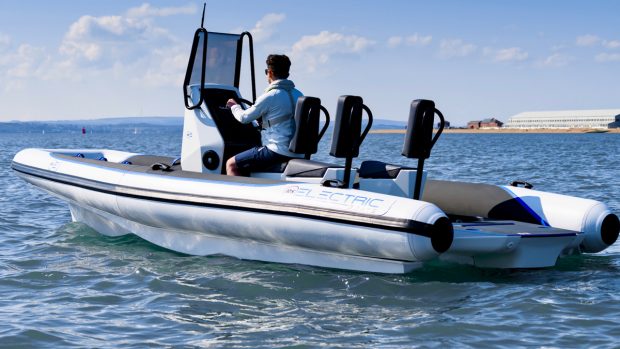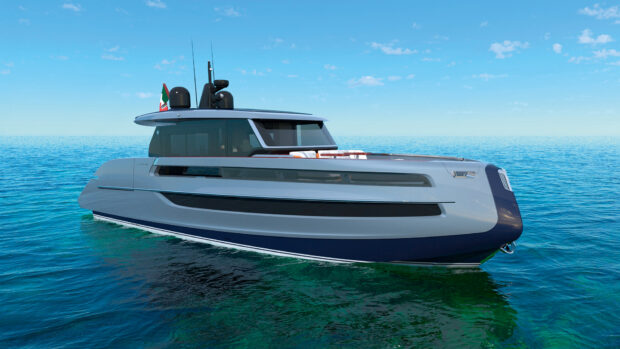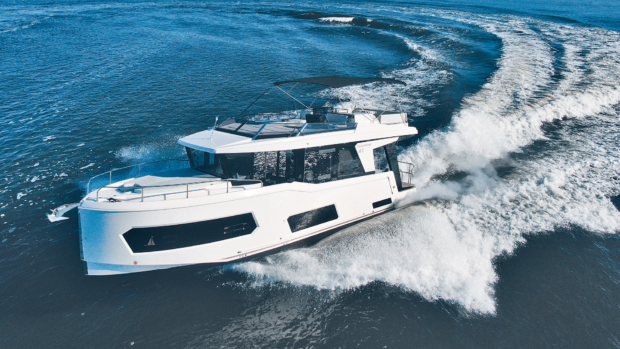Scott and Mary head to Castro, the capital city of Chiloe, to explore the island and its fascinating history
Position: Castro (capital of Chiloe’) Chiloe’
Scott (YT) and Mary Flanders (MS) left Gibraltar on 16 September 2006, and we’ll be following their journey every step of the way, thanks to this unique online “blog”. For a complete list of all the couple’s blog entries click here
After bidding farewell to their canine friend Chonos, whom they found a trusted family for in local business man Bernando, Scott and Mary head to Castro, the main city of Chiloe, to explore the island and carry out some boat chores
Monday 28 January
We have been learning about the history of Chiloe and Castro. Castro was founded by the Spaniard, Martin Ruiz de Gamboa in 1567. The Dutch attacked the settlement in the 1600s and when Charles Darwin arrived in 1834 aboard the Beagle he found extreme poverty on the island – not a pound of sugar or a steel knife to be bought on the island. No one owned a watch or had a clock. The church bells were rung by a man who “had a decent notion of time”.
In more recent history an earthquake struck on May 22, 1960. The resulting tsunami emptied the bay for 15-30 minutes while a number of locals raced to the dry beds to collect shellfish. Sadly the returning tidal wave entered the bay killing 200, and laid waste to all the coastal homes, bridges and docks. Prior to the earthquake, during the 1950s there was a potato famine, which lasted several years. The poorest of the poor flocked to the cities trying to find work and food. In Castro this group built shanty houses on stilts called palafitos, which looked out over the bay and its free land. This was the first group of homes to go during the tsunami tidal wave. The palafitos have since been rebuilt and have become a major tourist attraction along with the wooden churches around the island.
Chiloe is still a beautiful, quiet laid back place. The Chilotes are struggling to enter modernity by slowly switching from subsistence farming and fishing to aquaculture businesses and some tourism. The majority of folk are still what us westerners would consider poor but they are content living a simple and rewarding life. There are no chrome and glass buildings, most are built of wood. There are still no travel agents in Castro and the only car rental company is the local Chevy dealer who has a handful of small new cars in stock. Chonos’ new family sells real estate. We have rented a car for three days starting on Tuesday to explore the island (100 miles by 30 miles). Our first day will include a trip to meet Bernardo and look at one of his properties out of courtesy. The problem is we like pretty much everywhere we go but it would be nice to have a little place on Estero Pailad (Egret’s first anchorage) with a mooring out front. We could stay there between January and March soaking in the atmosphere before returning to our everyday adventures. This is not an original thought. More and more mainland Chileans and foreigners are buying or building places such as this.
We received a recent e-mail from Milt (M) and Judy Baker (J) aboard N47 Bluewater (Med Bound 07). M and J are back in their winter headquarters of Barcelona enjoying the great city. Their text included subtle whining about Barcelona cold weather. We of course whined back about the hot weather here. However, in our jests back and forth comes a simple truth about how adaptable us cruisers become. During our year in the Deep South we faced weather most folks would consider extreme, with high winds every few days, and sunshine, rain, hail and snow all in the same day at times. Anchoring, dinghying to shore, docking or cruising was difficult at times, however, all this became routine and not uncomfortable because we became acclimatized and wore the proper clothing. Mary and I aren’t any tougher than anyone else. You wouldn’t want to be dropped into these situations but as you move north and south your skills and tolerances adjust to the routine. One reason UK, French, New Zealand and Australian cruisers are such prolific long distance cruisers is that their home waters are difficult with high winds, high tidal ranges, accompanying currents and general overall difficult boating conditions. So they are used to it, simple as that.









